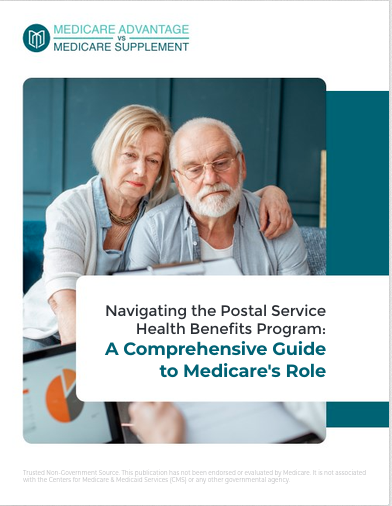Key Takeaways:
- Medicare’s 2024 overhaul aims to cap out-of-pocket prescription drug costs, significantly reducing expenses for beneficiaries, especially for insulin and high-cost drugs.
- The Inflation Reduction Act has enabled price negotiations for certain drugs, although beneficiaries will see these effects gradually, with the first results impacting 2026.
Medicare’s Prescription Plan Is Getting an Overhaul in 2024 — What You Need to Know
In 2024, Medicare’s prescription drug plan is undergoing significant changes that will affect millions of beneficiaries across the country. The goal is to lower out-of-pocket costs and expand access to vital medications, building on previous reforms introduced by the Inflation Reduction Act. These new regulations, particularly for Medicare Part D, aim to protect seniors and people with disabilities from escalating drug prices and ensure better access to affordable care. Let’s take a closer look at what you need to know about these changes and how they could impact your healthcare budget.
What Changes Are Coming to Medicare Part D in 2024?
1. Caps on Out-of-Pocket Prescription Costs
One of the most significant changes for 2024 is the cap on out-of-pocket costs for those enrolled in Medicare Part D. Under the new rules, once you hit the catastrophic coverage threshold of $8,000 in true out-of-pocket (TrOOP) costs, your expenses for the rest of the year will be covered. Before 2024, beneficiaries had to continue paying a small percentage of their drug costs even after reaching the catastrophic coverage phase. Now, once you meet the $8,000 threshold, your Medicare Part D plan covers all remaining costs for formulary drugs, easing the financial burden on those who need high-cost medications.
2. Price Negotiation for High-Cost Drugs
For the first time in Medicare’s history, the government will have the authority to negotiate prices directly with pharmaceutical companies for a selection of high-cost drugs. In August 2023, the first ten drugs subject to negotiation were announced, and by 2026, beneficiaries will begin seeing reduced prices for these medications. These drugs, which treat conditions like cancer, heart failure, and diabetes, accounted for a significant portion of Medicare’s overall drug spending. By allowing Medicare to negotiate prices, the federal government aims to curb excessive drug costs and offer more affordable treatment options to beneficiaries.
Table: Projected Savings from Medicare Drug Price Negotiations
| Year | Number of Negotiated Drugs | Estimated Savings |
|---|---|---|
| 2026 | 10 | $6 billion |
| 2027 | 15 | $7.5 billion |
| 2028 & Beyond | 20+ per year | Ongoing savings |
3. Continued $35 Cap on Insulin
Starting in 2023, a key feature of the Inflation Reduction Act was a $35 monthly cap on insulin costs for all Medicare beneficiaries. This cap will continue in 2024, providing predictable and affordable access to insulin for seniors and those with diabetes. Whether or not you have met your plan’s deductible, the $35 limit applies, meaning you won’t have to worry about unexpectedly high costs for your insulin prescriptions.
4. Zero-Cost Vaccines
Medicare Part D now fully covers vaccines recommended by the Advisory Committee on Immunization Practices (ACIP) at no cost to the beneficiary. In 2024, this includes vaccines for diseases such as shingles, Tdap, hepatitis A, and hepatitis B for low-risk individuals. This change ensures that seniors can receive preventive care without financial barriers, making it easier to stay up-to-date on important immunizations.
How Will These Changes Impact Your Prescription Drug Costs?
1. Savings for High-Cost Drug Users
If you’re someone who uses high-cost medications, the 2024 changes will likely save you a significant amount of money. For instance, after hitting the $8,000 catastrophic coverage threshold, you won’t have to pay anything for your covered drugs for the rest of the year. This is a stark improvement over previous years when beneficiaries still had to contribute 5% of their costs even after reaching the catastrophic phase.
In addition, the price negotiation for certain high-cost drugs could result in major savings once the negotiated prices take effect in 2026. For example, someone paying thousands of dollars per year for a cancer medication could see that cost dramatically reduced thanks to Medicare’s new negotiation powers.
2. Lower Premiums for Part D Plans
Another benefit in 2024 is that premiums for Medicare Part D plans are expected to decrease slightly. The average monthly premium for stand-alone Part D prescription plans will drop to $40, providing some financial relief for beneficiaries, though plan-specific costs may vary. It’s essential to review your plan options during open enrollment to make sure you’re choosing the most cost-effective coverage.
Table: Expected Average Premiums for Medicare Part D in 2024
| Type of Plan | 2023 Premium | 2024 Premium |
|---|---|---|
| Stand-alone Part D Plan | $41.63 | $40.00 |
| Medicare Advantage Prescription Drug Plan (MA-PD) | $17.86 | $17.50 |
Other Key Provisions to Watch in 2024
1. Inflation Rebates for Drug Price Hikes
Pharmaceutical companies that raise their prices faster than the rate of inflation will face financial penalties in the form of rebates. This rule, which started in 2023, is intended to discourage drug manufacturers from imposing steep price hikes on medications that millions of Medicare beneficiaries rely on. By penalizing excessive price increases, the government hopes to stabilize drug prices and limit the financial strain on Medicare enrollees.
2. Expanded Eligibility for Extra Help Program
The Extra Help program, which helps low-income beneficiaries pay for their prescription drugs, will be expanded in 2024. Under the new rules, more people will qualify for full assistance, which can eliminate deductibles and premiums for prescription drug coverage, as well as reduce copayments for medications. If you think you might qualify, it’s worth looking into this program during the open enrollment period.
How to Prepare for the 2024 Changes
As Medicare’s open enrollment period approaches, it’s important to review your prescription drug plan and make sure it fits your needs. Here are a few steps to help you get started:
- Compare Plans: With premiums expected to decrease slightly, and several plans offering enhanced benefits, it’s a good idea to compare your options. Use Medicare’s Plan Finder tool to see what plans are available in your area and which ones offer the best coverage for your medications.
- Check Your Drug Costs: If you take high-cost medications, review how much you’re expected to pay out-of-pocket in 2024, especially if you’re nearing the $8,000 catastrophic coverage threshold.
- Explore Extra Help: If your income qualifies, the Extra Help program could save you hundreds of dollars each year by reducing or eliminating your prescription drug costs.
What to Expect Moving Forward
The 2024 overhaul of Medicare’s prescription drug plan is just the beginning. Additional changes are coming in 2025, including a hard cap of $2,000 on out-of-pocket drug costs. These reforms, combined with ongoing price negotiations and expanded access to financial assistance programs, represent the government’s effort to ensure that seniors and people with disabilities can afford the medications they need without sacrificing other essential expenses.









